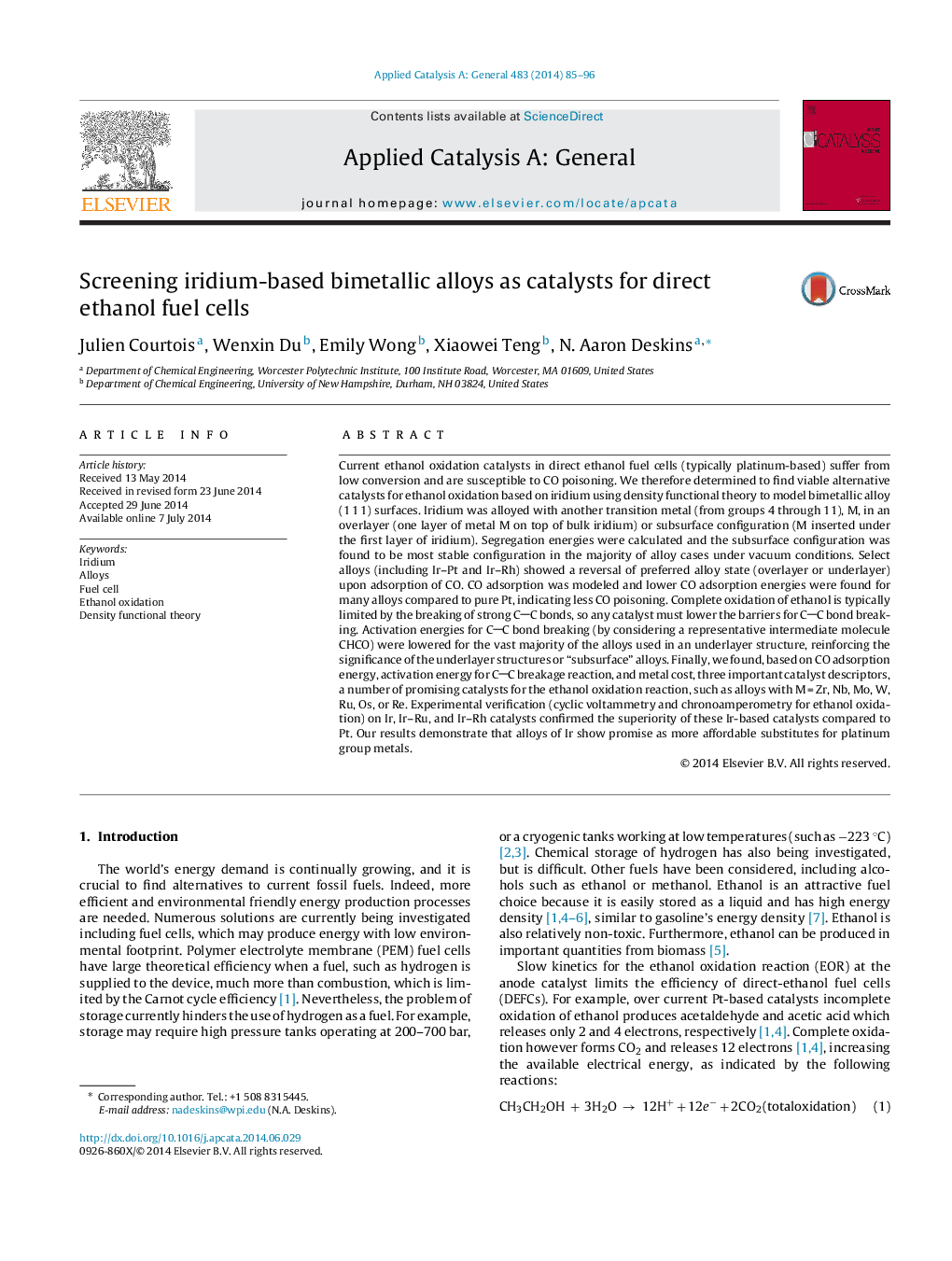| کد مقاله | کد نشریه | سال انتشار | مقاله انگلیسی | نسخه تمام متن |
|---|---|---|---|---|
| 39734 | 45833 | 2014 | 12 صفحه PDF | دانلود رایگان |
• Density functional theory is used to model iridium-based alloys for ethanol oxidation catalysis.
• Resistance of these alloys to CO poisoning is determined.
• Ability to break CC bonds for alloys modeled.
• Several potential alloys for ethanol oxidation identified.
• Experimental measurements performed to verify theoretical predictions.
Current ethanol oxidation catalysts in direct ethanol fuel cells (typically platinum-based) suffer from low conversion and are susceptible to CO poisoning. We therefore determined to find viable alternative catalysts for ethanol oxidation based on iridium using density functional theory to model bimetallic alloy (1 1 1) surfaces. Iridium was alloyed with another transition metal (from groups 4 through 11), M, in an overlayer (one layer of metal M on top of bulk iridium) or subsurface configuration (M inserted under the first layer of iridium). Segregation energies were calculated and the subsurface configuration was found to be most stable configuration in the majority of alloy cases under vacuum conditions. Select alloys (including Ir–Pt and Ir–Rh) showed a reversal of preferred alloy state (overlayer or underlayer) upon adsorption of CO. CO adsorption was modeled and lower CO adsorption energies were found for many alloys compared to pure Pt, indicating less CO poisoning. Complete oxidation of ethanol is typically limited by the breaking of strong CC bonds, so any catalyst must lower the barriers for CC bond breaking. Activation energies for CC bond breaking (by considering a representative intermediate molecule CHCO) were lowered for the vast majority of the alloys used in an underlayer structure, reinforcing the significance of the underlayer structures or “subsurface” alloys. Finally, we found, based on CO adsorption energy, activation energy for CC breakage reaction, and metal cost, three important catalyst descriptors, a number of promising catalysts for the ethanol oxidation reaction, such as alloys with M = Zr, Nb, Mo, W, Ru, Os, or Re. Experimental verification (cyclic voltammetry and chronoamperometry for ethanol oxidation) on Ir, Ir–Ru, and Ir–Rh catalysts confirmed the superiority of these Ir-based catalysts compared to Pt. Our results demonstrate that alloys of Ir show promise as more affordable substitutes for platinum group metals.
Figure optionsDownload high-quality image (145 K)Download as PowerPoint slide
Journal: Applied Catalysis A: General - Volume 483, 5 August 2014, Pages 85–96
